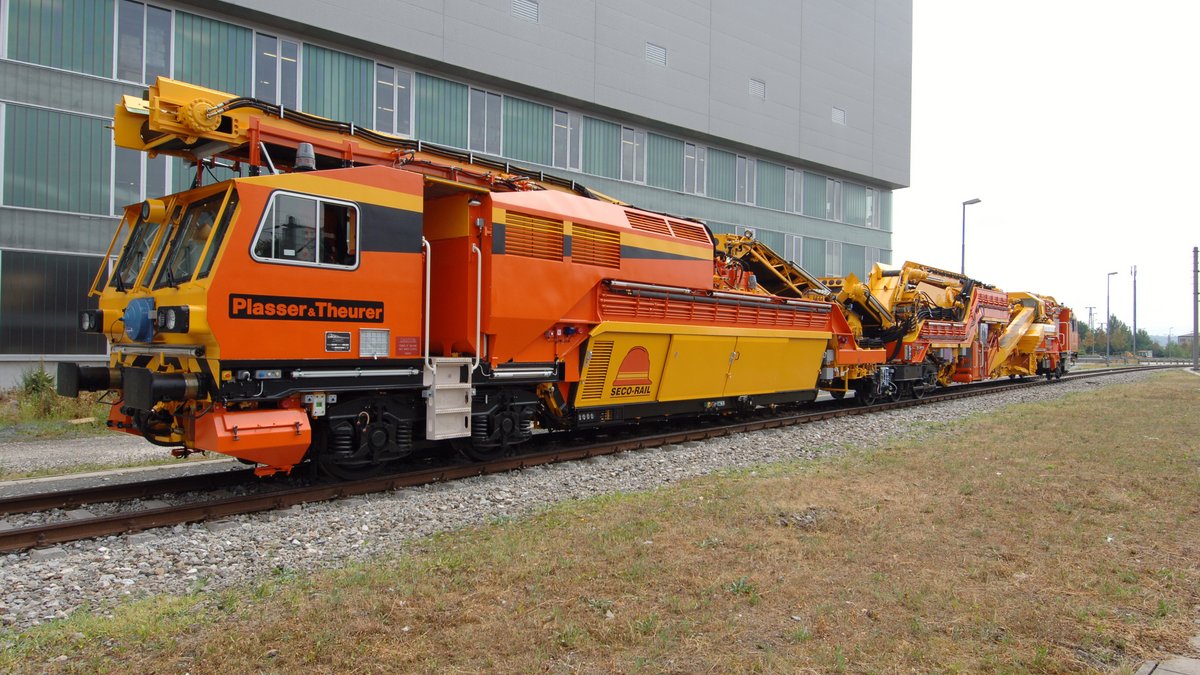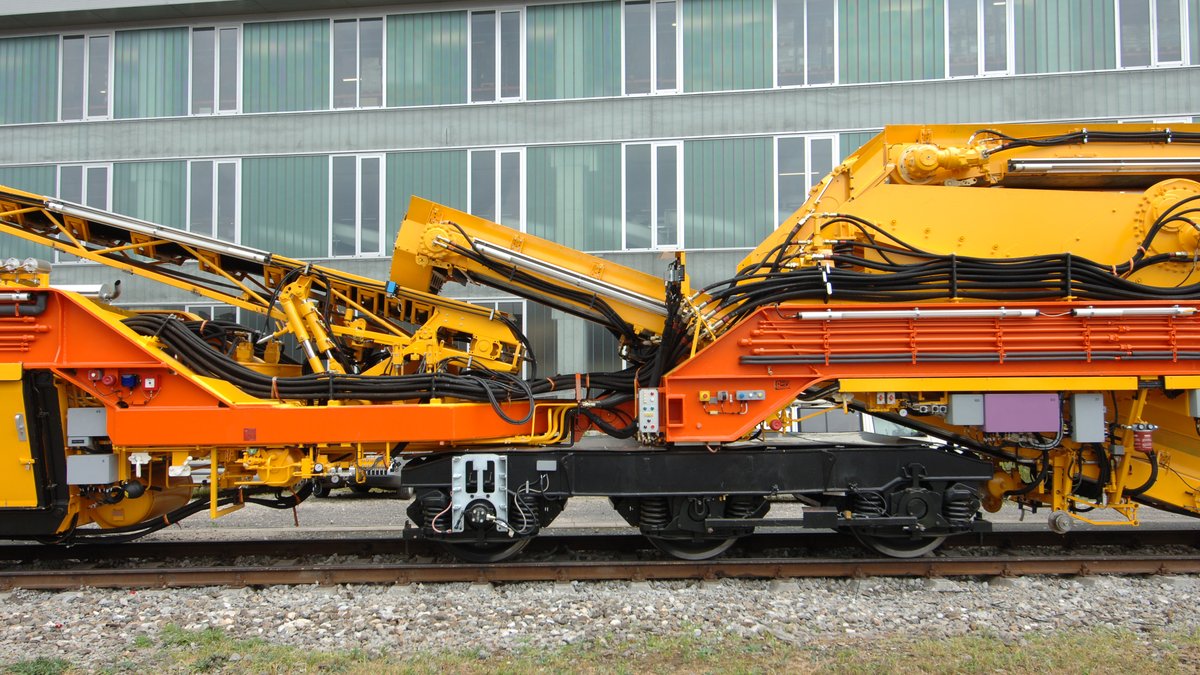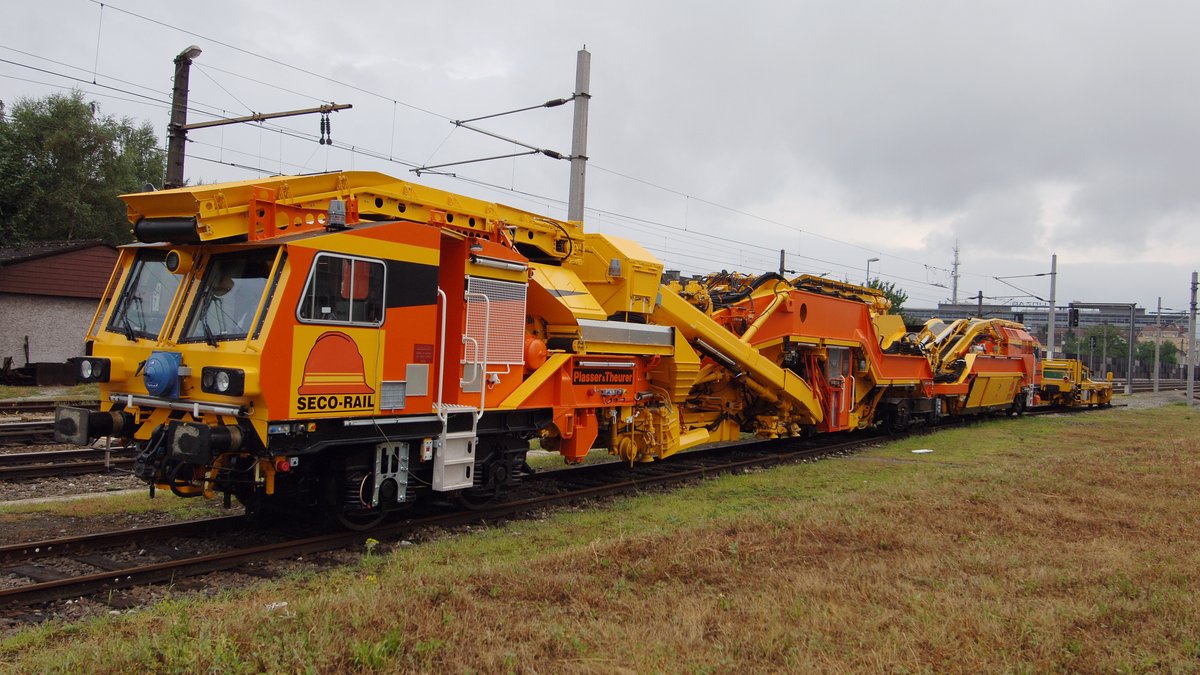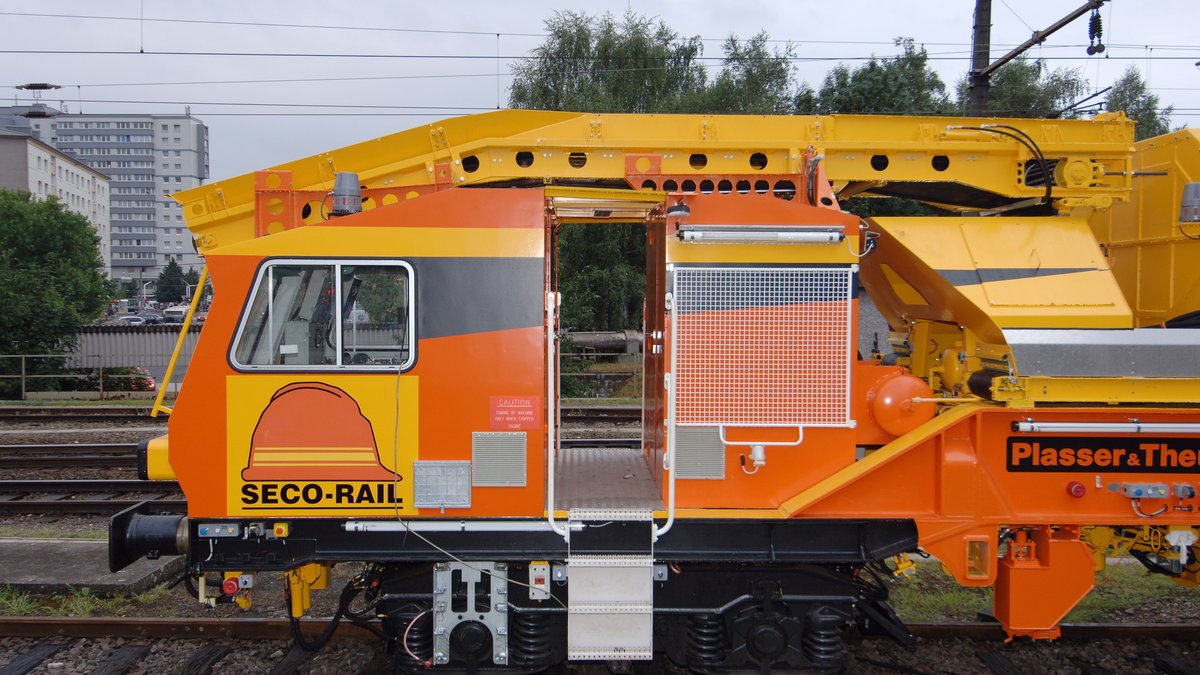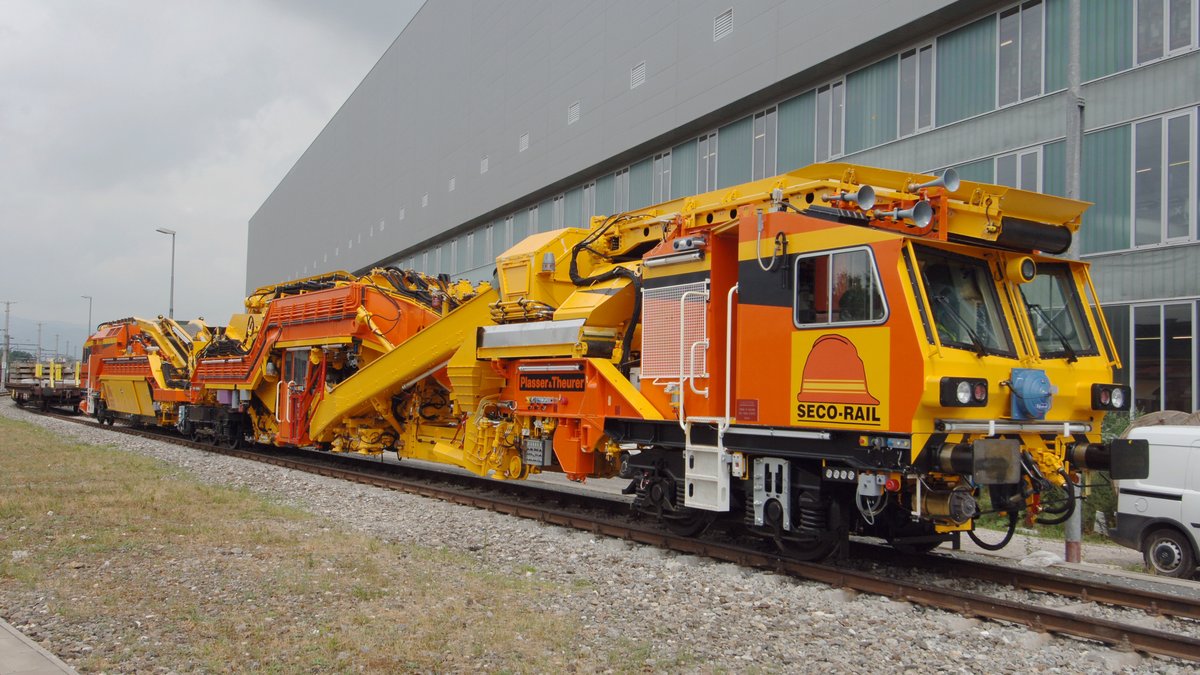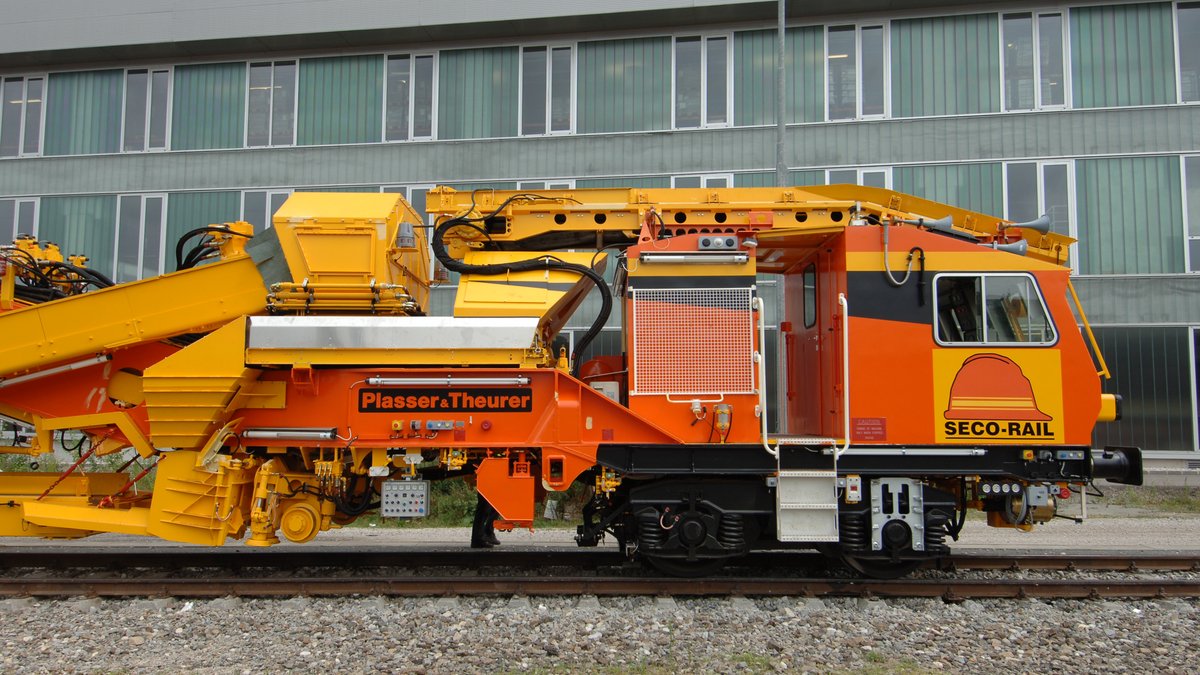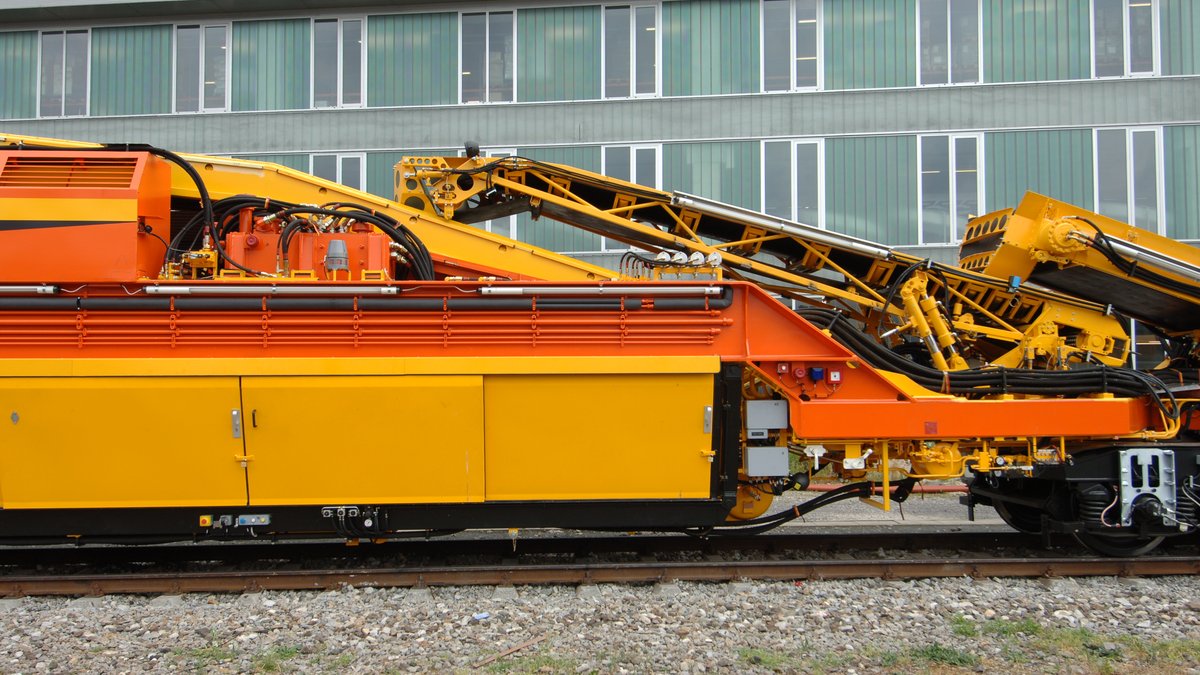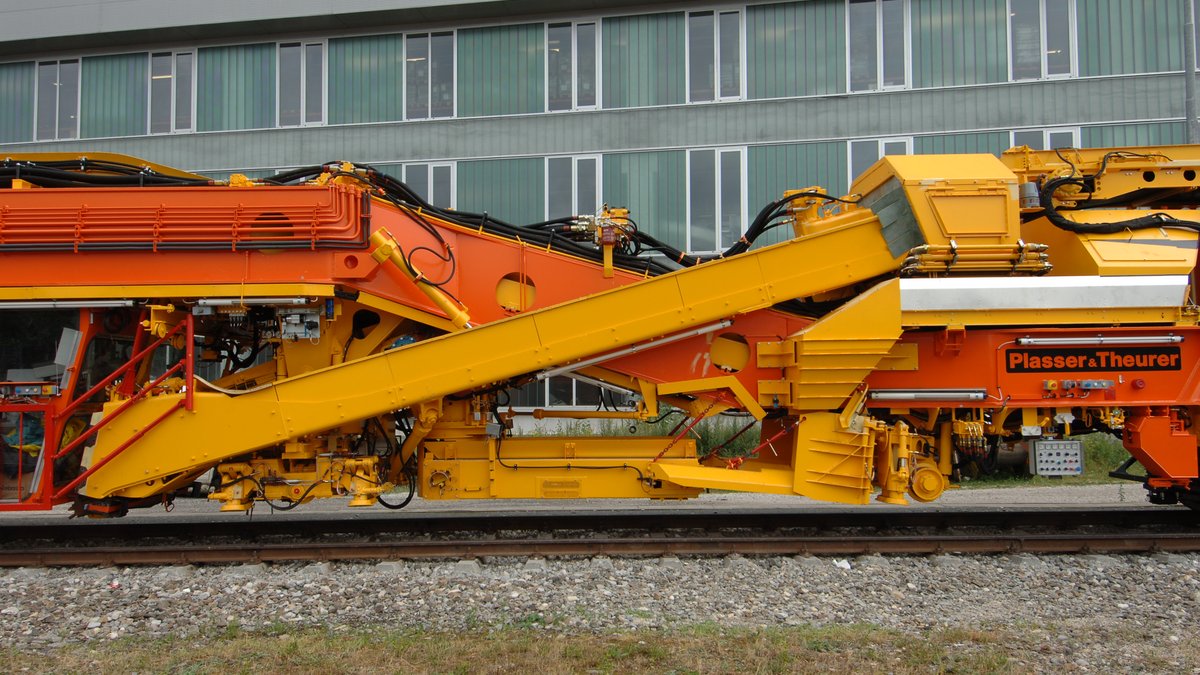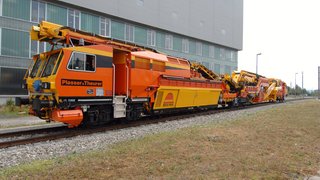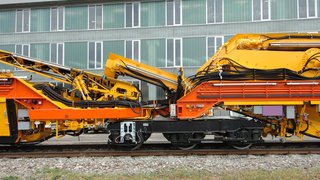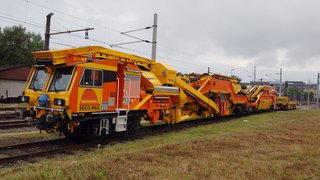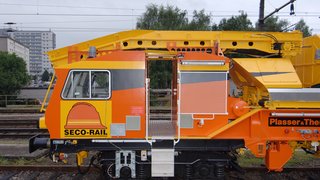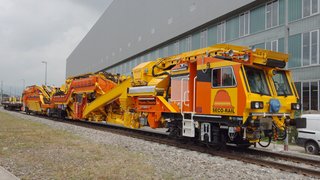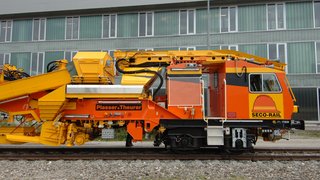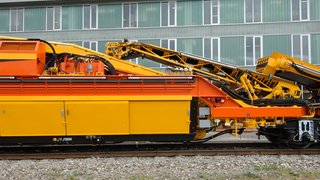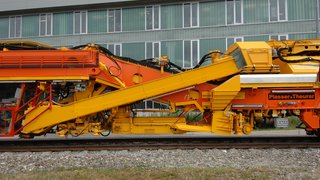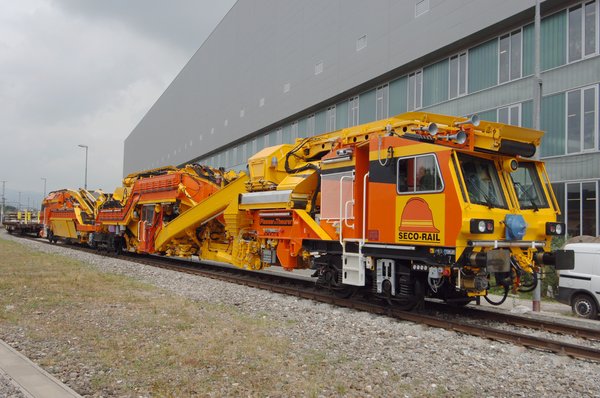The single screen ballast cleaner RM 90 is the completion of the production programme of modern ballast cleaning machines destined for the broad gauge market and intended to replace the well proven RM 76-type.
The production programme of Plasser & Theurer offers the RM 90-NIR as the modern successor of the RM 76 being in compliance with RGS GM/RT 2400 providing a wide range of innovations, like a self-propelled transit speed of 60 mph (approx. 100 kph), an excavation chain enabling single line working under many site conditions & locations found on NIR infrastructure at a higher performance level including the capability of cleaning Point & Crossings (P&C) layouts), a 3-deck screening unit, a most modern machine control system and finally the insertion of new ballast during the cleaning process. The machine built for UK & Irish Rail loading gauges comprises the experience that has been gained with the RM 95-RT & RM 90 NR ballast cleaners already in operation on Network Rail (NR) infrastructure in the UK and the RM90-IR in operation in Republic of Ireland and other similar machine types in use worldwide.
The machine concept of the ballast cleaner RM 90 provides a machine consisting of a vehicle in articulated design. The power trailer ATW in front carries the diesel engine and other accessories of the machine drive as well as the spoil handling conveyor belts. The second part – the excavation and screening vehicle ASW, holds the excavation chain, the lifting and slewing unit, the screening unit, the ballast distribution and new ballast insertion device as well as several material handling conveyor belts.
The traction drive and all working drives of the RM 90-NIR are executed by hydraulics which always played an important role in the development of Plasser & Theurer ballast cleaning machines. Compared to other drives, modern hydraulics offer considerable advantages such as high reliability under hard working site conditions and optimized maintenance of the system and its components.
Plasser & Theurer ballast cleaning machines have a clear-cut design. The ballast flow is in a streamlined, uncomplicated manner without any superfluous constructional deviations.
By removing the ballast bed material from underneath the sleepers using a guided pentagon shaped scraper chain, taking it up in the chain trough and transporting it from the chain into the screening unit via two conveyor belts, a partial loosening of the spoil from the ballast takes place. A freely oscillating 3-deck screening unit with linear oscillations achieves the final separation of spoil and ballast.
The findings in the sector of screen construction in the past have been exemplary and fed back into the constant development of modern Plasser & Theurer screens.
Re-ballasting by the ballast cleaner RM 90 ensures a stable and accurate track position even after ballast cleaning and creates the basis for effective work of the follow-up equipment required to build up again the correct track geometry (tamping machine, regulator and DTS-stabilizer).
The construction of the ballast distribution unit allows to bring in also new ballast from the rear end of the machine coming from material handling wagons of the MFS-type coupled to the RM 90 (MFS-type material handling units are optional equipment).
To enable spoil handling during ballast processing MFS units can be coupled to the front part of the machine as well.
The machine is designed to pull/push a total load of 1200-ton level track during work.
If required, the machine can also carry out total excavation of the contaminated ballast bed.
An additional advantage of the Plasser & Theurer ballast cleaner RM 90 is the design of the transfer conveyor belts on the front end of the machine. Their design enables spoil to be loaded onto MFS wagons propelled by the ballast cleaner or via the swivel type conveyor belt onto conventional open box type wagons standing on the adjacent track. Furthermore, the design renders unnecessary a match wagon for the ballast cleaning machine in case the RM 90 is transited in train formation.
